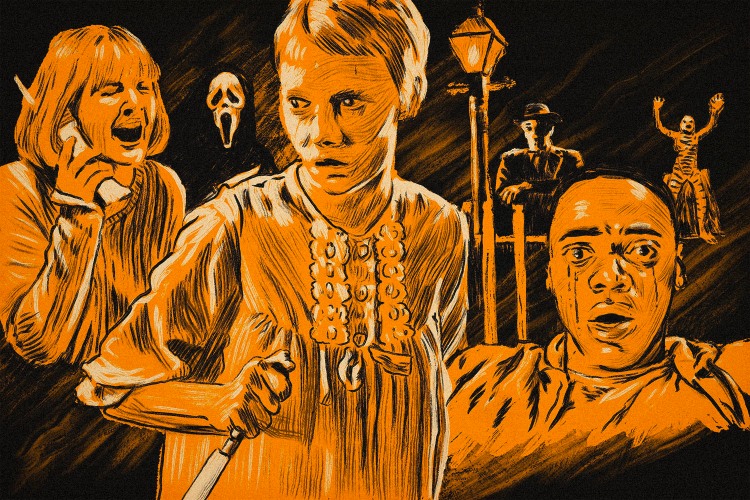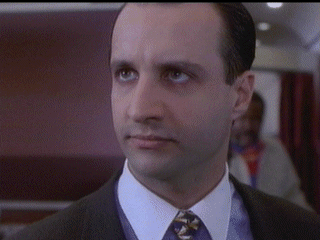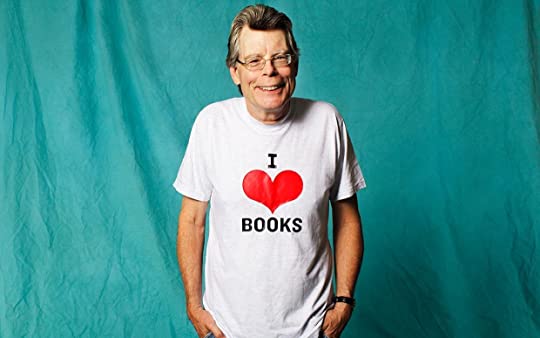What Era Of Horror Was The Best?
Step right up, horror enthusiasts! If you’ve ever found yourself pondering the question, “What era of horror was the best?” then buckle up, because we’re about to take a thrilling journey through the chilling annals of horror history. From the spine-tingling classics of the past to the blood-curdling modern masterpieces, we’re going to delve into the depths of fear and discover which era reigns supreme. Get ready to face your fears and determine once and for all which era of horror truly deserves the crown.
When it comes to horror, everyone has their own personal preferences. Some may argue that the golden age of horror lies in the eerie black-and-white films of the 1930s and 1940s, where Universal Studios brought iconic monsters like Dracula and Frankenstein to life. Others may find themselves drawn to the slashing and screaming of the 1980s, with its slasher flicks and gory practical effects. And let’s not forget the recent resurgence of horror in the 2010s, where atmospheric tension and psychological terror take center stage. With each era offering its own unique blend of scares and storytelling, it’s a tough question to answer. But fear not, dear readers, for we shall explore the depths of horror history and emerge with a verdict that will leave you both terrified and satisfied. So grab your popcorn, turn off the lights, and prepare yourself for a bone-chilling adventure through the ages of horror.
When it comes to the best era of horror, opinions may vary, but one period stands out for its impact and lasting influence – the Golden Age of Horror in the 1930s and 1940s. This era brought iconic classics like “Dracula” and “Frankenstein,” introducing audiences to timeless monsters. The black and white cinematography, atmospheric settings, and emphasis on suspense and psychological terror laid the foundation for future horror films. While every era has its gems, the Golden Age of Horror holds a special place in the hearts of horror enthusiasts.

What Era of Horror Was the Best?
The horror genre has evolved over the years, with different eras bringing their own unique styles and themes to the table. From classic monster movies to psychological thrillers, each era has left its mark on the genre. But which era of horror was the best? Let’s explore the different eras and their contributions to determine the ultimate era of horror.
The Silent Era: Birth of Horror
In the early days of cinema, the silent era laid the foundation for horror as we know it today. This era, spanning from the late 1890s to the late 1920s, gave birth to iconic horror films such as “Nosferatu” and “The Cabinet of Dr. Caligari.” These films relied heavily on atmospheric visuals and expressionistic techniques to create a sense of dread and unease. The absence of sound added an eerie quality to the films, amplifying the impact of the visuals.
During the silent era, horror was still finding its footing, experimenting with different techniques and storytelling approaches. While the limitations of the technology at the time prevented the genre from fully exploring its potential, the silent era laid the groundwork for future horror filmmakers. It introduced audiences to the concept of horror on the big screen and set the stage for the horrors yet to come.
The Evolution of Horror
As technology advanced and the film industry grew, horror underwent a significant evolution. The introduction of sound in the late 1920s opened up new possibilities for filmmakers to create immersive and terrifying experiences. This marked the beginning of the next era of horror: the classic era.
The classic era of horror, which spanned from the 1930s to the 1950s, is known for its iconic monsters and creature features. This era gave us timeless classics such as “Frankenstein,” “Dracula,” and “The Wolf Man.” These films brought the horror genre into the mainstream and introduced audiences to iconic characters that would become synonymous with the genre.
During the classic era, horror films began to explore deeper themes and psychological elements. Despite being constrained by censorship regulations, filmmakers found creative ways to convey horror through symbolism and subtext. This era also saw the rise of psychological horror, with films like “Psycho” pushing the boundaries of what was considered acceptable on screen.
The Golden Age of Slashers
In the 1970s and 1980s, horror experienced a resurgence with the emergence of the slasher subgenre. This era, often referred to as the Golden Age of Slashers, brought us iconic villains such as Michael Myers, Freddy Krueger, and Jason Voorhees. Films like “Halloween,” “A Nightmare on Elm Street,” and “Friday the 13th” became cultural phenomena and solidified the slasher subgenre’s place in horror history.
The Golden Age of Slashers was characterized by its emphasis on gore and violence. These films pushed the boundaries of what was considered acceptable in terms of on-screen violence, shocking and thrilling audiences in equal measure. The rise of practical effects also played a significant role in the success of these films, allowing filmmakers to bring their horrific visions to life in gruesome detail.
The Modern Era: A New Wave of Horror
In recent years, horror has entered a new era, marked by a wave of innovative and thought-provoking films. This modern era has seen the rise of independent horror filmmakers who are pushing the boundaries of the genre and challenging audience expectations. Films like “Get Out,” “Hereditary,” and “The Babadook” have garnered critical acclaim and breathed new life into the genre.
The modern era of horror has embraced diversity and tackled social issues in a way that previous eras had not. These films explore themes of racism, grief, and mental illness, using horror as a vehicle to examine the human condition. With their fresh perspectives and unique storytelling approaches, these films have earned a place among the best in the genre.
In Summary
Each era of horror has brought its own contributions and innovations to the genre. From the atmospheric visuals of the silent era to the iconic monsters of the classic era, and the slashers of the Golden Age to the thought-provoking films of the modern era, each era has left its mark on the horror genre. While it is difficult to determine which era was the absolute best, it is clear that horror has continuously evolved and adapted over time, ensuring its enduring popularity among audiences. So, what era of horror is the best? The answer ultimately lies in personal preference and the individual’s own unique fears and tastes.
Key Takeaways: What era of horror was the best?
- The 1970s and 1980s saw a golden age of horror with iconic films like “The Exorcist” and “Halloween” that continue to be influential today.
- The 1990s brought a resurgence of horror with movies like “Scream” and “The Blair Witch Project” that introduced new and innovative storytelling techniques.
- In recent years, the 2010s have seen a rise in psychological horror films like “Get Out” and “Hereditary” that explore deeper themes and provide thought-provoking experiences.
- Each era of horror has its own unique style and tropes, offering something different for fans of the genre to enjoy.
- The best era of horror ultimately depends on personal preference and what elements of horror resonate the most with each individual.
Frequently Asked Questions
Here are some frequently asked questions about the best era of horror:
1. What are the different eras of horror?
Horror has evolved over the years, with distinct eras showcasing different styles and themes. Some of the notable eras include:
The Silent Era (1890s-1920s): This era laid the foundation for horror cinema, with iconic films like “Nosferatu” and “The Cabinet of Dr. Caligari” setting the stage for future scares.
The Universal Era (1930s-1950s): This era saw the rise of classic monster movies, such as “Frankenstein” and “Dracula,” which became enduring icons of horror.
The Hammer Era (1950s-1970s): Hammer Films rejuvenated horror with their gothic style and emphasis on blood and gore. Films like “Horror of Dracula” and “The Curse of Frankenstein” became cult favorites.
The Slasher Era (1970s-1980s): This era introduced a new wave of horror, with films like “Halloween” and “Friday the 13th” popularizing the slasher subgenre and creating iconic villains like Michael Myers and Jason Voorhees.
The Modern Era (1990s-present): This era encompasses a wide range of horror styles, from psychological thrillers like “The Sixth Sense” to found footage films like “Paranormal Activity.” It continues to push boundaries and experiment with new storytelling techniques.
2. Which era of horror was the most influential?
While each era of horror has made significant contributions to the genre, the Universal Era (1930s-1950s) stands out as one of the most influential. During this time, Universal Studios produced iconic monster movies that have had a lasting impact on popular culture. Films like “Frankenstein,” “Dracula,” and “The Wolf Man” introduced audiences to memorable characters and established the foundations for future horror storytelling.
The Universal Era also set the stage for the expansion of horror into different subgenres, such as creature features and psychological horror. Its influence can still be seen in modern horror films and the continued fascination with classic monsters.
3. Which era of horror was the most innovative?
The Modern Era (1990s-present) can be considered the most innovative era of horror. With advancements in technology and filmmaking techniques, filmmakers have been able to explore new storytelling methods and push the boundaries of what is considered “scary.”
This era has seen the rise of found footage films like “The Blair Witch Project” and “Cloverfield,” which brought a sense of realism and immersion to horror. Additionally, psychological horror films like “Get Out” and “Hereditary” have challenged traditional horror tropes and delved into deeper themes.
The Modern Era continues to innovate with unique concepts, visual effects, and narrative structures, keeping audiences on the edge of their seats.
4. Which era of horror had the most memorable villains?
The Slasher Era (1970s-1980s) produced some of the most memorable villains in horror history. This era popularized the slasher subgenre, characterized by masked killers stalking and brutally murdering unsuspecting victims.
Icons like Michael Myers from “Halloween,” Freddy Krueger from “A Nightmare on Elm Street,” and Jason Voorhees from “Friday the 13th” became household names and spawned numerous sequels and spin-offs. Their distinctive appearances and haunting backstories made them unforgettable and cemented their status as horror legends.
The influence of these slasher villains can still be seen in contemporary horror films and the enduring popularity of the genre.
5. Which era of horror had the most diverse range of subgenres?
The Modern Era (1990s-present) has seen the most diverse range of subgenres in horror. With the advent of digital filmmaking and easier access to distribution platforms, independent filmmakers have been able to explore niche subgenres and bring fresh perspectives to the genre.
From found footage films and supernatural horror to psychological thrillers and body horror, the Modern Era has embraced a wide array of subgenres that cater to different tastes and preferences. This diversity has allowed horror to continue evolving and attracting a broader audience.
RANKING THE HORROR DECADES
Final Thought: Which Era of Horror Reigns Supreme?
After delving into the various eras of horror, it’s clear that each period has brought its own unique flavor to the genre. From the classic black-and-white scares of the Golden Age to the blood-soaked slasher films of the 1980s and the psychological thrillers of the modern era, horror has evolved and adapted to reflect the fears and anxieties of society. While it’s difficult to definitively crown one era as the “best,” it’s evident that the impact and influence of each era continue to shape the genre today.
The Golden Age of horror, with its gothic atmosphere and iconic monsters like Dracula and Frankenstein, laid the foundation for the genre. It captivated audiences with its timeless tales of terror, setting the stage for future generations of horror filmmakers. The 1980s saw a surge in slasher films, with franchises like Friday the 13th and A Nightmare on Elm Street becoming cultural phenomena. These films tapped into the fears of a generation, offering a cathartic release and establishing horror as a lucrative genre.
In the modern era, horror has taken a turn towards psychological thrillers and supernatural stories that explore deeper themes. Films like Get Out and Hereditary have pushed the boundaries of the genre, challenging audiences with thought-provoking narratives and complex characters. This era has shown that horror can be both entertaining and intellectually stimulating, proving that the genre is far from stagnant.
Ultimately, the best era of horror is subjective, as it depends on personal preferences and the cultural context in which one grew up. Each era has contributed something valuable to the genre, leaving an indelible mark on the collective imagination. Whether you prefer the classic monsters of the past, the slashers of the 80s, or the psychological horrors of today, one thing is certain: horror will continue to evolve and captivate audiences for years to come.
So, grab some popcorn, turn off the lights, and immerse yourself in the thrilling world of horror, no matter which era you prefer. After all, what’s life without a little scare?






